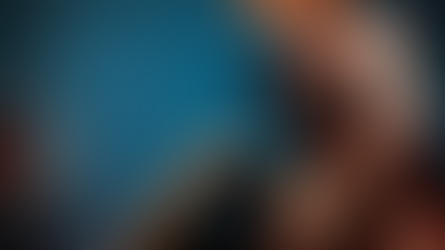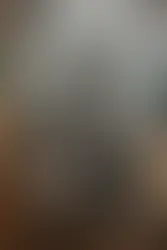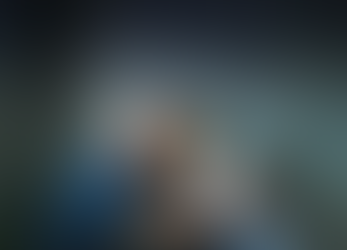Creativity in a Crisis - In Conversation with Esme Rose Marsh
- Ketki Mahabaleshwarkar

- Jun 17, 2020
- 7 min read
The pandemic’s disruption of our daily lives can leave a certain deficit in inspiration and motivation to ‘keep creative’. As per modern myth, creatives can ‘lose’ their creative flair in extended periods of inactivity or develop a creative block. By effect, Quarantine has definitely acted as a catalyst for creative inactivity. Conversely, this lockdown supplies the very fuel needed for creativity to keep running – time. We are now faced with lots and lots of time, not only for practise, but self-reflection about our medium of work, whether that be drawing, writing, painting, photography, and more. It’s no debate that in order to best utilise this time, is to consistently practise. But it then raises the question of what to do when our usual sources of inspiration are temporarily shut. Do we, as creatives, immediately become closed for business?
If creativity is an expression of one’s true self, then self-expression cannot and will not be stopped in the midst of a crisis. Art will surely find a way, through new avenues and sources of inspiration. Now more than ever, art and creative media act as a form of escapism from our alarming reality. Its viewership may decrease, through the closures of galleries and museums, but it will find new ways to become accessible, and thus, consumable.
In reality, we may all resemble Edward Hopper paintings, but in spirit we feel more akin to Kandinsky. As our world appears more and more abstract and certainly devoid of colour, one can feel lost within tumultuous news cycles and a constant cloud of despair. In the predicted gloom, I couldn’t help but wonder what space art will occupy in a post Covid-19 world. What space will it be allowed to occupy? It is unspoken, but creatives everywhere face an unnatural fear of impending irrelevancy - or even current displacement. In a world grasped with the harsh realities of dealing with a mass medical emergency, there is a fear, shared by many, that art has minimal impact in the face of a pandemic.
However, what we all seem to overlook is art’s deeper impact on our psychological wellbeing, as technically explained by Aesthetic Cognitivism - a school of thought that proposes the idea that the value of art stretches beyond its capabilities to provide pleasure, delight, or even emotional catharsis, to provide a significant ‘cognitive value’. In simpler terms, colours, imagery, and visuals have the power to make us feel cheerful, calm, or even hopeful; all emotions that Esme Rose Marsh hopes to evoke through her collage work. I spoke to (see: Zoom) the Nottingham based visual artist and writer about the medium of collage, creating and managing Hook Magazine, and this new struggle to stay creative within a crisis.
Q: Firstly, I want to ask about your art the choice of medium: collage. I know you are an artist as well as a writer, so could you give us an introduction (of sorts) to your creative work?
Esme: Yes! So, I am an artist, and I work mainly with the medium of collage. I work with magazines, brands, or anything else in between on media briefs for artwork. For example, if they want editorial art for a website feature or a brand wants a logo – I work with them to create it! I’ve recently worked on quite a lot of podcast artwork because I think a lot of people have been making new podcasts in lockdown.
How did you get involved in collage, or art in general?
E: I’ve collaged since I was a little girl! It’s something that I’ve always done for fun. I studied Fashion Journalism at university and through that course, I got more exposure to magazines and how editorials work. That’s what inspired me to start my own magazine. I started doing collages for the magazine and then it took a life of its own – so that’s where I took my collage work next.

Delving more into the medium of collage – it’s so unique and interesting. It’s not the most common medium present on social media either. What do you think is its strength, in conveying your message?
E: Someone once told me that art is a portal, and that really stuck with me years later. Nowadays, I don’t always get an opportunity to create something for me or for pleasure. But somehow, any project that I work on ends up resonating on something that’s going on in my life. It will end up having some link. I think that I use collage as a tool to decipher or sift through what’s going on in my own subconsciousness. It’s deeply personal in that sense. It’s a mode of self-exploration, even though I don’t set all the briefs myself. I like to think that’s the magical element to it! I tend to choose one central object or theme to run with, and then the whole collage will convey a message.
Your recent Be Your Own Collage pop-up project is all about collaboration – it requires a form of a working relationship between you as the artist and the commissioner. What do you think is so powerful about artwork being a collaboration?
E: I think art can seem really inaccessible for a lot of us, so this project has been really productive in challenging that belief. My project invited people to engage with art; people who would not have normally engaged with art. It’s been really great in that respect. It has been amazing to give people something as well, in a time like this. Our current situation isn’t one that allows opportunities to create a lot of photographic memories, so on a metaphorical level, my collage allows me to transport people out of their four walls at home and put them in their own dreamscape. This is achieved through the power of art, and the medium of collage.

The project and the Instagram campaign have been huge successes!
E: Thank you! Yes definitely, I think the project has been a big hit because, like I mentioned before, it provides some sort of memento from the quarantine experience. I hope my artwork can be something positive for people to look back on. On a personal level, the project was really right for me. The author Elizabeth Gilbert (best known for her book Eat, Pray, Love) wrote a book called 'Big Magic' which is all about unleashing individual creativity. It’s a really brilliant book, I totally recommend it! Anyways, she has this belief that creativity exists as this energetic force that is floating around in the ether. This energy exists for anyone to take hold of and use. If you don’t ‘grasp’ this energy when you spot it, it’ll just float on for someone else to use. It’s kind of a case of grabbing ideas as they come to you – and holding on to them when they’re yours. So, I think I used her theory with this project. I grabbed it with both hands and just ran with it! I had the idea for a while, but I was mulling over the best time to launch it. Then, when the pandemic hit, I convinced myself that it wasn’t a great time to launch something that people have to buy. However, I decided a month ago that I have to run with the idea before it runs away with me – and just go for it!
I know you also have your spirituality and consciousness magazine, Hook Magazine, which you manage and run. The issues have an amazing combination of visuals, art, and articles. What was your process of creating it?
E: I think the magazine was born organically. I never initially set out to start a magazine per se, I have always just wanted to write, just as I have always wanted to create art. Saying that, I’ve always loved magazines and so Hook Magazine just sort of ended up being created.

A bit of a backstory: I founded Hook Magazine through a little bit of teen angst and through not knowing how to break into the publishing industry without a lot of contacts or money. So, because I didn’t know how to get into the industry, my logic was to make a magazine myself. I also feel like the topics that Hook explores, modern day spirituality and conscious living, were not represented in any publishing model I saw. I didn’t feel like, at the time, that any publication could speak about those themes in an authentic way. Traditional publishing models are very hierarchal, and so I didn’t feel like there was any space where my ideas could be expressed authentically, as they’re so personal as well. I know that there is a greater conversation now about conscious living and spirituality, but this was like four or five years ago where it was nowhere to be seen in mainstream media. From that point, I then tried to grow magazine! I researched a lot and spoke to editors. I think it really is difficult to start an independent publication because it requires a lot of money. That’s a definite challenge – but I combatted that by doing collaborations with different stockists, like launching in bookstores and in different countries. The first issue had interviews with artists and writers I admire, so it was really a celebration of work!
Are there any parallels between being an artist/writer and also managing the business aspects of the publication?
E: I think it’s less of a parallel and more of a tug of war, if I’m being honest! It’s constantly difficult to handle raw creativity along with the commodification of my work. I feel like the ideal conditions to work sometimes, is for me to go completely off grid for a while without media influence. But in reality, I have to constantly be online to market my work and engage with my audience. It’s requires a balance; of protecting your creativity and also being the forefront of your ‘brand’. It’s something I’m still learning, and probably will always be learning, how to do. The work is the most important thing ultimately!
In light of the recent state of our world, what do you think the arts industry can do to contribute positively? (Going beyond the economic sense, such as donating to different organisations.)
E: I think art just has to continue doing what art has always done, which is to be a kind of ‘tonic’ in the midst of challenging times. I hope art can make people feel seen, right now. There is hope for new creatives too, who are just entering the industry. I know it is really hard right now and there’s a lack of the traditional opportunities. But looking at it positively, we have an opportunity to understand our own contribution to the world, and art as a whole. Since everything is on pause, we have the time to invest in creative ventures that we may have been previously afraid of. I think there’s a lot of creativity to be found right now.


To check out more of Esme’s work, see Instagram: @esmerosemarsh and Hook Magazine: @hook.magazine
























































Comments